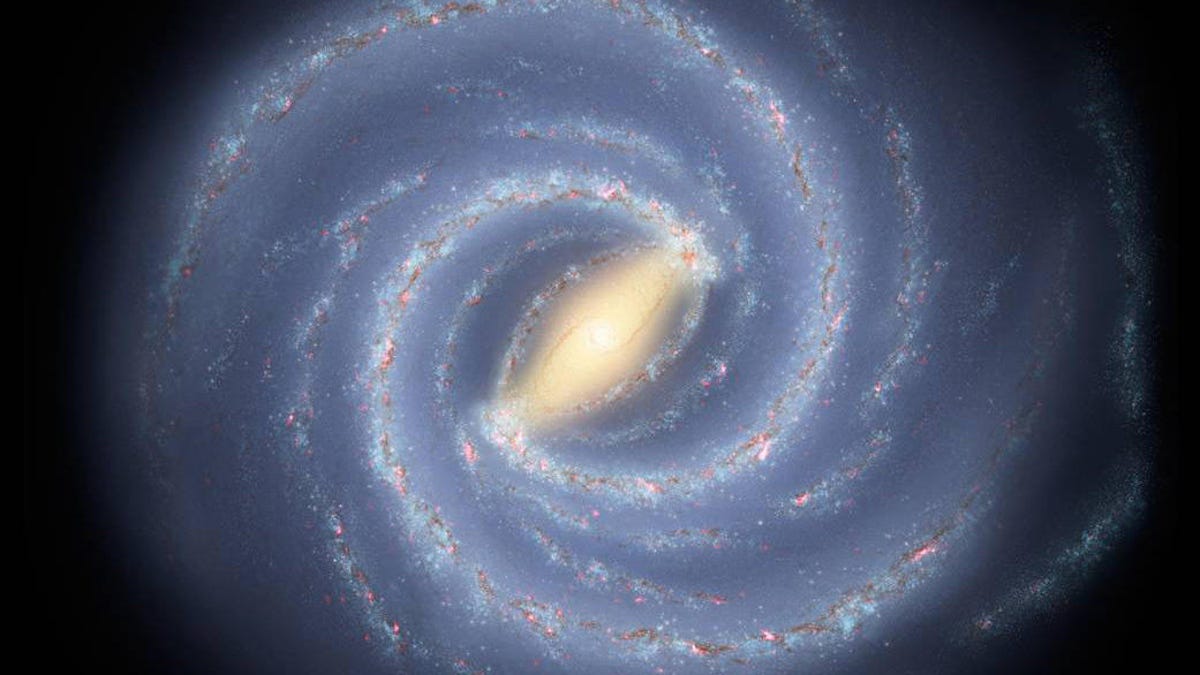How a collision with a dark dwarf galaxy may have shaped the Milky Way
An ancient crash may've broken up our galaxy's spiral and could eventually help explain the nature of the universe itself.

This artist's concept illustrates a view of the Milky Way, using infrared images from NASA's Spitzer Space Telescope.
If you check out the above artist's rendering of how we think the Milky Way would look if viewed from on high by some godlike entity, you can see that our galaxy's outer spiral arms aren't perfect, consistent lines. Rather they're broken in spots by what look like some sort of ripples. New research suggests those characteristic ripples could be the result of a dwarf galaxy made up of mostly mysterious dark matter crashing into ours hundreds of millions of years ago.
The Antlia 2 dwarf galaxy was only recently discovered in data from the European Space Agency's Gaia space telescope. Sukanya Chakrabarti, an assistant professor at the Rochester Institute of Technology, used the data to calculate the dark little galaxy's path through the cosmos over the eons and found that it would've barreled through the Milky Way, creating the ripples visible in the outer disc.
Chakrabarti had predicted the existence of such a dark matter-dominated small galaxy back in 2009, through data analysis. She presented her new findings at a meeting of the American Astronomical Society in St. Louis on Wednesday.
Simulations show Antlia 2 passing through the Milky Way. The left panels show the gas distribution and the right panels show the stars. The top panels show the galaxies face on, while the bottom panels show the galaxies on edge.
"If Antlia 2 is the dwarf galaxy we predicted, you know what its orbit had to be," she said in a release. "You know it had to come close to the galactic disc."
Gaia data has also pointed astronomers toward individual stars that appear to have cruised through the Milky Way in the past.
In addition to providing a glimpse of our own galactic history, the discovery could shine some light on the puzzling case of what, exactly, dark matter is. Estimates vary, but astrophysicists now think as much as 95 percent of the universe could be made up of a combination of dark matter and dark energy.
"Ultimately you could use Antlia 2 as a unique laboratory to learn about the nature of dark matter," Chakrabarti says.
She and her team are hopeful that future data releases from Gaia will provide more clarity on what Antlia 2 is, where it's been, and how it shook up our own cosmic neighborhood through its travels.

